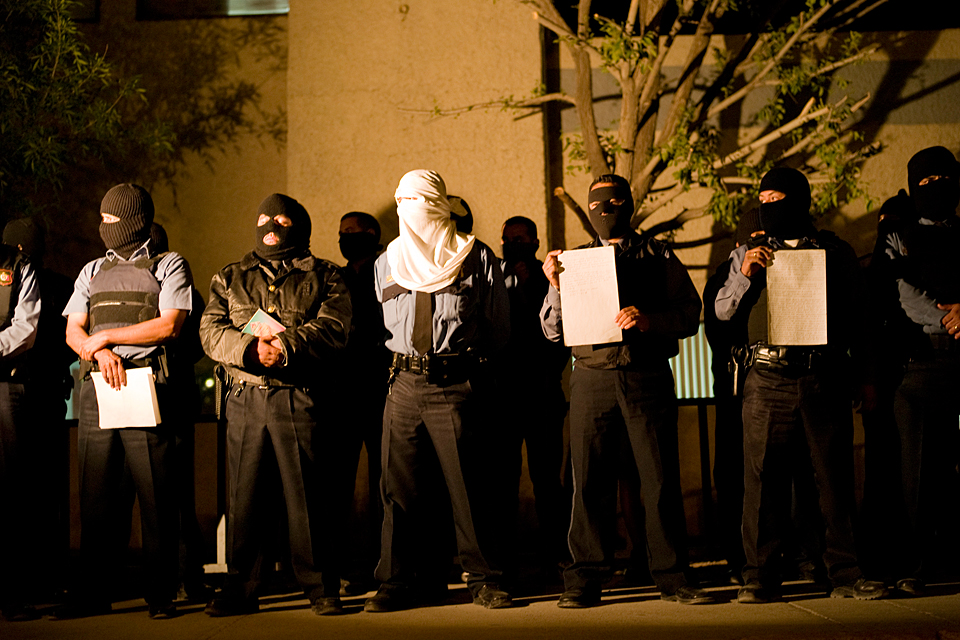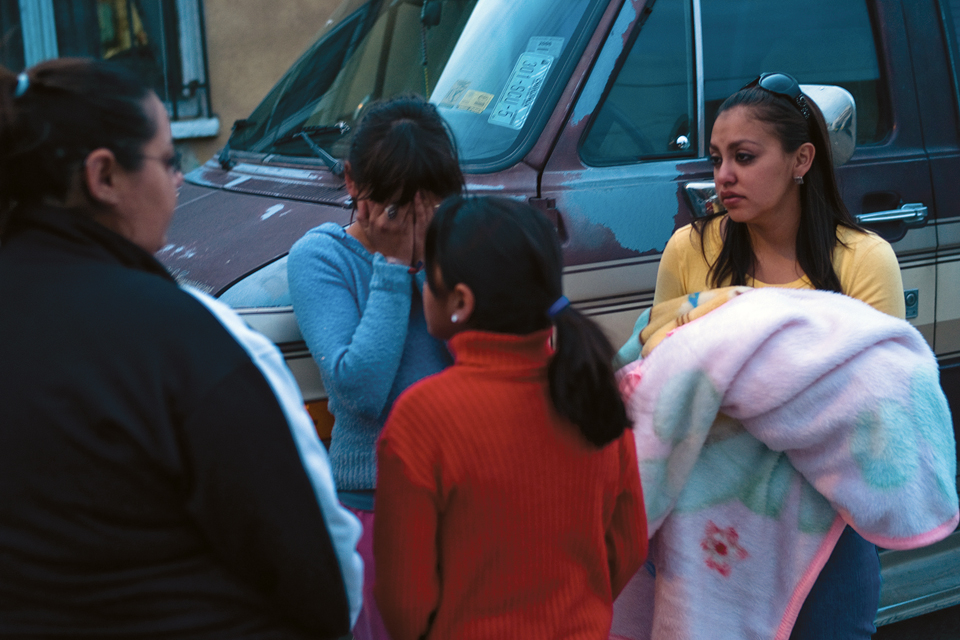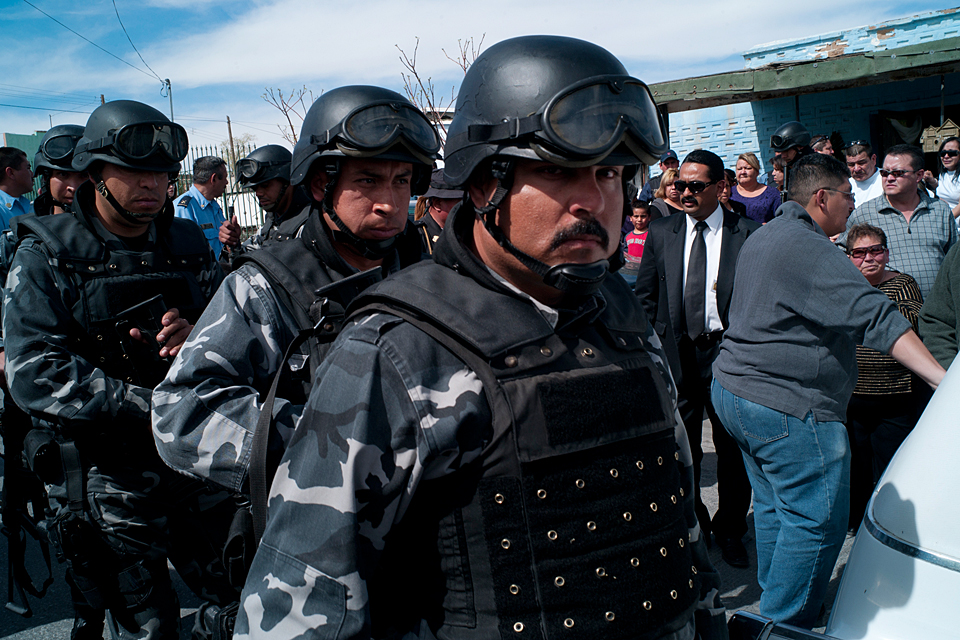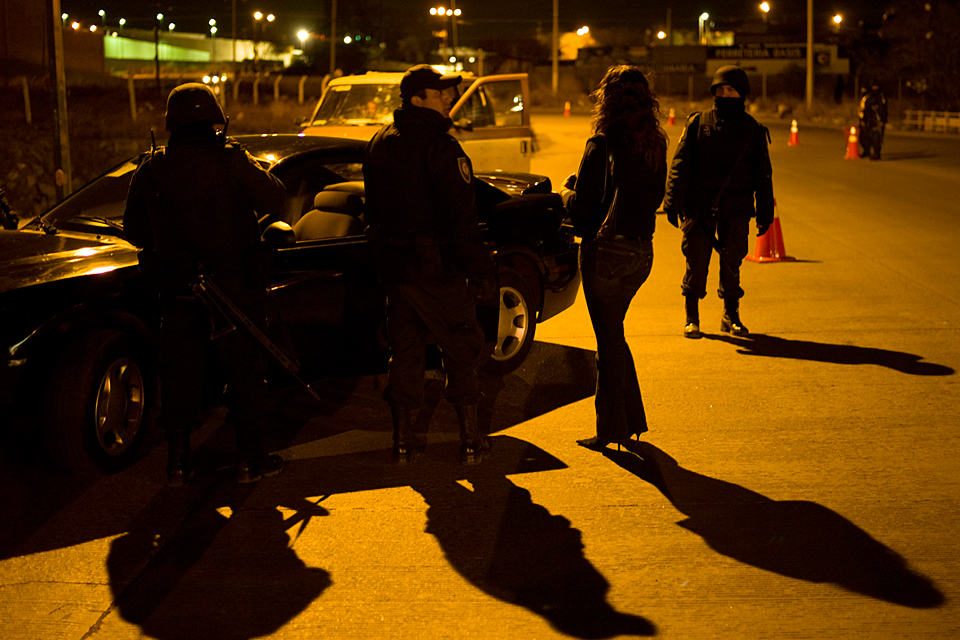CSUN Acquires Works by Mexican Photographer Julián Cardona
The images are unfiltered, stark documentations of the harsh realities of immigration and border relations between the United States and Mexico.
Acclaimed Mexican photographer Julián Cardona has spent the past two decades chronicling life on both sides of the border. His work has been displayed around the world and featured in such publications as Harper’s Magazine and the award-winning book, “Juarez: The Laboratory of Our Future.”
California State University, Northridge’s Institute for Arts and Media has recently acquired more than 8,500 digital images, and is expecting about 9,000 more on film, from the photographer, adding to the institute’s expanding collection of photographs by ethnic minority photographers and of Southern California’s ethnic minority communities.
“Julián Cardona’s work focuses on the people who migrate from Mexico to the United States, the violence in the border cities and the economic violence that surrounds the immigrants’ plight,” said CSUN journalism professor Kent Kirkton, director of the institute. “He has captured the images and the stories of people that very few Americans pay attention to.”
Kirkton said Cardona’s images will be a key component of the institute’s new Border Studies Collection.
“This collection will examine the issues surrounding the border between the United States and Mexico,” he said. “Immigration, human rights, globalization, economic violence, et cetera will be presented through manuscripts, newspapers, video, images and guest lectures. Julian’s work provides us with very powerful images that tell some of those stories.”
In an interview with Kirkton last year, Cardona dismissed as idealistic the belief that something good will come from his photographs, which have chronicled the brutal reality of migrating from Mexico to the U.S. The images have captured the callousness of smugglers, the harsh terrain of the American Southwest and menial jobs at slave wages as well as the re-creation of cultural traditions that mirror those at home.
“I realized very early that a journalist is a powerless person,” Cardona said. “You have to document things because you may not be able to change things… In the future, this time will be understood. Somebody will come after us and say ‘What was happening in the city or in Juárez or on the border? What happened during the Calderon years?’ We are going to have more light coming from the things we share with others.”
Born in 1960 in Zacatecas, Mexico, Cardona moved to the border city of Juárez with his family as a small child. He attended school in Juárez, received vocational training and worked as a technician in the maquiladora industry. In 1991, Cardona returned to Zacatecas to teach photography. Two years later, he started his photojournalism career at Mexican newspapers El Fronterizo and El Diario de Juárez.
In 1995, Cardona organized the group exhibition “Nada Que Ver/Nothing to See” in Juárez about life in the maquiladoras. The exhibition was featured in Harper’s Magazine. Photographs from the exhibition inspired the award-winning book, “Juarez: The Laboratory of Our Future.” His photographs taken inside foreign-owned factories in Juárez were featured in “Camera of Dirt,” the controversial photo/essay book by Charles Bowden.
Cardona’s work has been exhibited in the Houston FotoFest 98: “Stories About Us”; “Borders and Beyond,” an international group show organized by Pro Helvetia-Arts Council of Switzerland; “Lines of Sight: Views of the U.S./Mexican Border,” an exhibition that travelled to galleries across California; and “Photography Past/Forward: Apeture at 50,” at Sotheby’s New York in 2003. In 2004, Cardona received the Cultural Freedom Fellowship awarded by the Lannan Foundation of Santa Fe, N.M.
Cardona continues to chronicle life along the border and for immigrants. His work has been featured in such books as “No One is Illegal” and “Exocus/Exodo” as well as exhibitions around the United States. He is currently a correspondent for Reuters in Ciudad Juárez, Mexico.
The mission of CSUN’s Institute for Arts and Media is to collect, preserve and disseminate the visual history of Southern California with an emphasis on ethnic minority communities and photographers. Oral histories, manuscripts and other ephemeral materials support the photograph collection.
The institute was established at CSUN in 1981 by Kirkton as the Center for Photojournalism and Visual History. It was renamed in 2008 as its mission and participation broadened. The institute presently holds more than one million images. Many of the images were produced by African-American freelance and independent photographers in the African-American communities in and near Los Angeles.
Other noteworthy collections held by the institute include images by the late freelance photographer Richard Cross, who documented the wars in El Salvador and Honduras for Newsweek, the Associated Press, the New York Times, and U.S. News & World Report where he was nominated for a Pulitzer Prize; Emmon Clarke, a volunteer photographer for César Chávez and the United Farmworkers during the formative period of the union; and photographer Herb Carleton, who spent his career at the Los Angeles Daily News, starting at the paper when it was known as the Valley News and Green Sheet.
For more information about CSUN’s Institute for Arts and Media, visit its website at http://csunartsandmedia.org/ or call Kirkton at (818) 677-3037.





 experience
experience